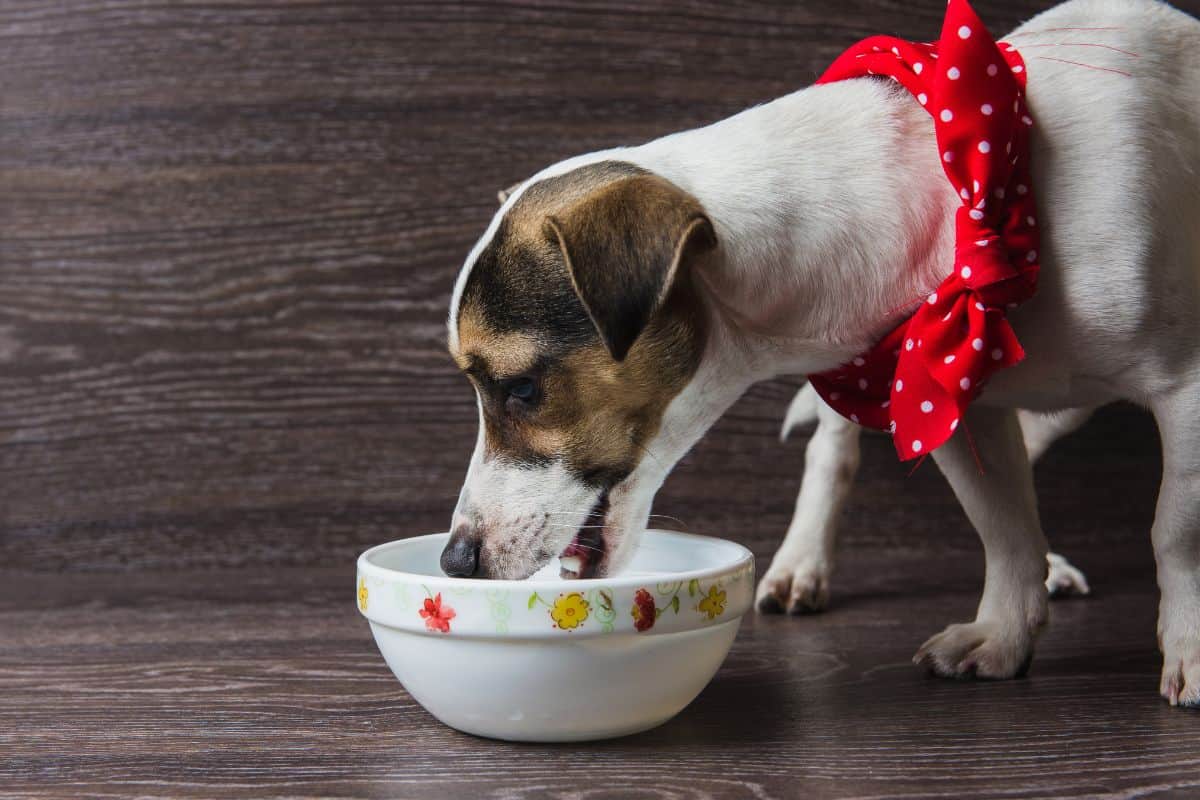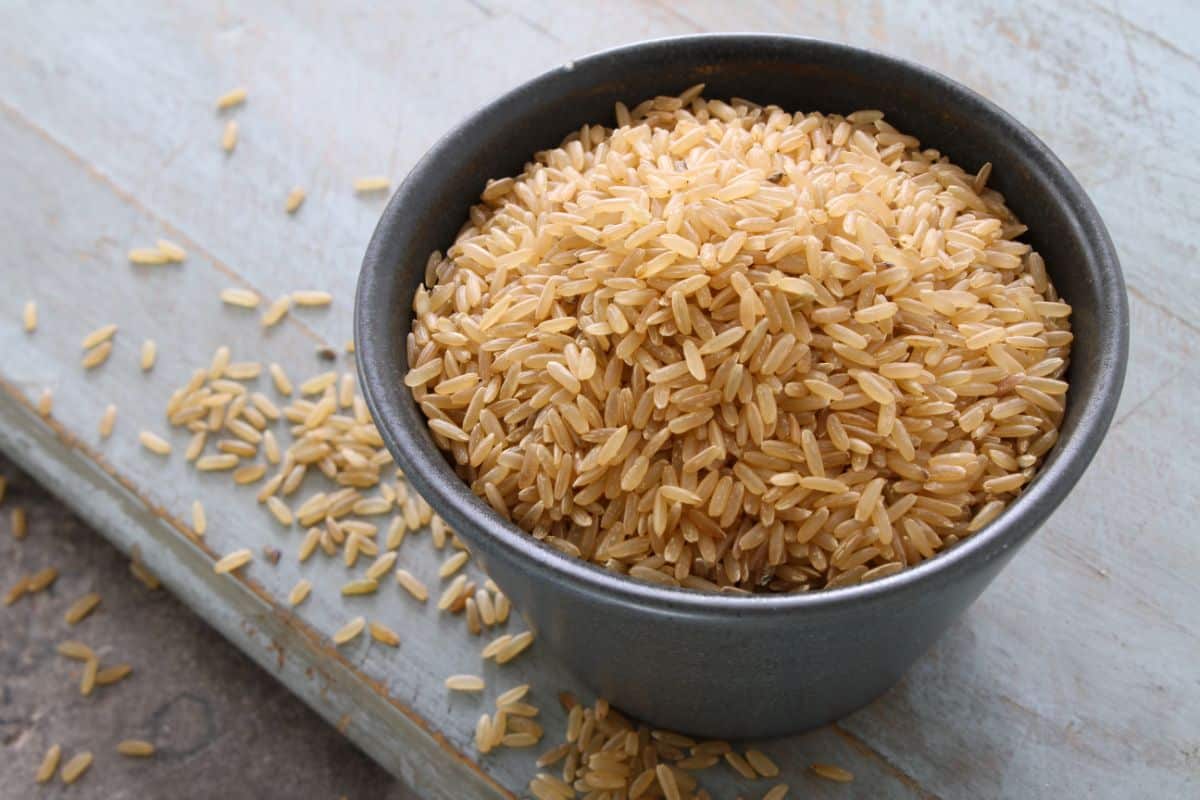White Or Brown Rice For Dogs: Which Is Better?
Knowing what is best to include and exclude from your dog’s diet is very important. We want our furry friends to live long, happy, and healthy lives after all.
One of the easiest ways to do that, apart from regular exercise and stimulation, is to make sure that they are getting all of the nutrients they need from their food.
The popularity of rice in dog food has ebbed and flowed over the years. Once one of the most common ingredients to find in commercial dog food and developing a reputation as a bit of a filler ingredient, it is more difficult to find now.
A large influence in this shift away from grain-heavy dog food recipes was the “grain-free” movement, but not all grains are created equal.
So, should you feed your dog rice, and if so, is white or brown rice better?
Do Dogs Need Grains?
Perhaps the most important question when deciding whether or not to feed your dog rice is whether or not they actually need grains in their diet.
The fact that dogs are carnivores often leads people to believe that they should avoid feeding much of anything other than meat to their furry friends. However, this is incredibly inaccurate.
When dogs were wild, the first part of their prey that they consumed was often the stomach. This would contain pre- or partially-digested fruits, grains, and seeds, suggesting that dogs naturally crave and require the nutrients found in such foods.
Similarly, dogs have been domesticated for over 100 years. The animal that was once wild and carnivorous has evolved, not only is their behavior and appearance much different from what it once was, their digestive system has evolved too.
Dogs are capable of digesting grains as long as they are appropriately prepared and they can get plenty of nutrients from whole grains.
Is Rice Just Filler?
Rice can seem like the perfect filler ingredient for commercial dog food. It is cheap, filling, and easy to add to any flavor food or meat base.
However, it is actually much more than that. Rice is a whole grain and therefore adds significant nutritional value to the food, provided that you choose rice that has not been overly processed.
Rice contains a lot of B vitamins and minerals that are often lacking in the other ingredients in commercial dog food. It is also easily digestible and assists in maintaining a healthy digestive system in your dog.
How Much Rice Is Good For Dogs?

If you decided to add rice to your dog’s diet, how much is good for them, and how much is too much?
The answer to this question rests solely on the size of your dog. Large breeds should not have more than ¼ cup of rice per day, and smaller breeds should have significantly less, around a tablespoon per day.
It can be added to their daily diet or used as a substitute for some wet or dry food when your dog’s stomach is upset.
Feeding your dog more rice than is recommended per day will not make them sick, there is no health issue that will develop as a direct result of too much rice, it is not toxic to dogs.
However, rice does contain a lot of calories, and feeding your dog too much of it could result in excess weight on your dog which can cause problems and health issues for them. Make sure to use rice sparingly in your dog’s diet.
How To Prepare Rice For Dogs
Rice should always be given to your dog after it has been fully cooked. The grains should be tender, or even a little mushy, especially if your dog has a more sensitive stomach or has experienced digestive problems in the past.
The cooking process makes the rice easier for your dog to digest and removes the excess starch from the grains. Cooking rice properly also lowers the risk of your dog ingesting high levels of arsenic.
It is important to note that the arsenic levels in rice are not high enough to be of concern according to the FDA, however, reducing the level of risk is always a good idea.
If your dog has an upset stomach, following the 50:50 rule is a great way to help them. Simply mix 50% of your dog’s regular food with 50% cooked rice.
The mixture will be gentler on your dog’s digestive system while giving them the nutrients they need from their regular food.
The 50:50 mix is not a balanced meal however and should only be fed to your dog for a maximum of two days. If your dog is still suffering from an upset stomach after this, seek medical advice to ensure there is not anything else going on, and to discuss potential supplements that may be necessary.
What Are The Health Benefits Of White Rice?
Due to the milling process that white rice is subjected to, much of the nutritional value has been removed. However, white rice still offers some benefits for your dog’s diet.
If your four-legged friend is suffering from an upset stomach that has resulted in diarrhea, white rice is the better choice to help them feel better quicker.
Rice is a great option for your dog when their stomach is upset, it is bland, soft, and easy to digest which is everything that kibble or commercial dog food isn’t.
White rice, however, has the edge over brown in this instance because it is lower in fiber. While brown rice would soothe your dog’s stomach just as well as white rice, it has a much higher fiber content which could make your dog’s diarrhea worse, or last longer.
It is important to note that if you feed white rice to your dog, there is an increased chance of your dog experiencing an allergic reaction. White rice is often made with additives that can cause upset in your dog’s GI system.
If your dog begins to display signs of digestive discomfort after eating white rice, it is best to avoid feeding it to them in the future.
Health Benefits Of Brown Rice

Because the milling process of brown rice is much less intense than that of white rice, it has a much broader nutritional profile, providing much greater nutritional value to your dog’s diet.
The main benefit of brown rice for your dog is its high fiber content. The fiber in brown rice helps to maintain your dog’s digestive system which also helps to keep their immune system and metabolism.
This is beneficial in ensuring that your dog maintains a healthy weight, has regular toilet habits, and is resistant to picking up bugs.
Vitamin B and D are available in abundance in brown rice. These vitamins help your dog or puppy to maintain strong and healthy teeth and bones, as well as optimize their metabolic health. This is great for ensuring that your dog can run and play with minimal risk of any broken bones.
Another health benefit of adding brown rice to your dog’s diet is the positive effect it has on cholesterol and blood pressure.
This is an important benefit if your breed is prone to high cholesterol or blood pressure issues, or your dog is a senior. A diet containing brown rice also promotes healthy bacteria in your dog’s gut which helps to avoid upset stomachs.
What about the other nutrients in brown rice? In addition to the vitamins and minerals already mentioned above, brown rice contains a fairly complete profile of nutrients.
Low in sodium, a great source of carbohydrates as well as fiber, and bursting with magnesium and iron, both of which are essential minerals for your pup.
Another benefit of brown rice over white rice is its lack of additives. Dogs are much less likely to experience an allergic reaction after consuming brown rice than they are white rice.
That said, it is still possible for a dog to have an intolerance to any kind of rice. If your dog suffers from an upset stomach or displays signs of digestive discomfort after eating rice, it is best to avoid supplementing their diet with it.
Don’t worry, there are plenty of other supplements that can be used to ensure that your dog is getting all the nutrients they need. Consult your veterinarian for tailored advice.
What About Red Rice?
Red rice is less common than white or brown rice, but it may still be an option for your and your pup. When prepared correctly for your dog, red rice can be a good middle ground between brown and white rice.
Red rice is very similar in structure and nutritional value to brown rice. It is firmer than brown rice and therefore requires slightly different preparation in order to be consumed by your dog, but the main difference is that red rice has its husk removed during the milling process.
This is similar to white rice, although red rice does not undergo a polishing process and as a result, all of the vitamins and minerals remain intact for your dog to absorb.
The removal of the husk means that, with proper preparation, red rice is easier to digest than brown rice which is perfect for when your dog has an upset stomach and you don’t want to feed them white rice.
If your dog is suffering from diarrhea, however, it would still be advisable to use white rice due to the high fiber content of red rice.
Due to the firmer texture of red rice, it is recommended that you allow it to soak in a bowl of water for at least 30 minutes before cooking, and to cook it for a little longer than brown rice to ensure that it is appropriately prepared for your dog to consume.
Final Thoughts
Overall, in the right quantities, there is a place for both white and brown rice in your dog’s diet. However, as a regular supplement to your dog’s food, brown rice offers the most nutritional value and the lower amount of extra calories.
White rice can be the most useful in helping your dog recover from an upset stomach, particularly when it is affecting their toileting due to its lower fiber content.
However, there is a higher risk of intolerance or allergic reactions due to the extensive processing of the grain.
Remember, when thinking about making changes to your dog’s diet, particularly the addition of food items, it is worth consulting your veterinarian who has much more personal knowledge of your dog’s needs and can offer tailored, expert advice on what is best for your dog.






